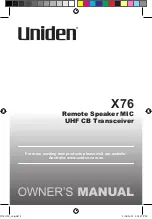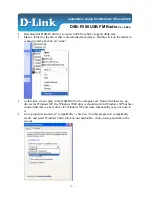
(N)oise (B)lanker and (A)utomatic (N)oise (L)imiter
(NB/ANL)
Both circuits are used for suppressing interference and are indicated
as
NB/ANL
on the display when activated.
While ANL only functions in AM mode suppressing above all
interferences resulting from generators, NB functions in AM and
FM mode suppressing above all impulse interferences as e.g.
interferences of the ignition system.
Receiver low-pass filter (HI-CUT)
In addition to the noise attenuators ANL and NB, stabo xm 5003
is equipped with a receiver low-pass filter. When the reception
quality is poor due to background noise, this filter is able to improve
the subjective hearing quality by filtering high frequencies occuring
above all in background noise. The display shows
HI-CUT
when
the filter is activated.
Direct access to channels 19 and 9 (CH 19/9)
The AM channel 9 is internationally used as emergency call and
as truck driver channel especially in Germany. Outside Germany,
channel 19 is used as trucker channel. However, both types of
modulation are used for this purpose. Thus, in case of an accident
or another emergency, you hopefully should be able to quickly
appeal for help using these channels. For being able to transmit
an urgent appeal for help as fast as possible in such an emergency
situation, your stabo xm 5003 features an extra key for directly
accessing these channels
CH19/9
. Thus, pressing this key once
activates channel 19, by pressing this key once again, channel 9
is activated. By pressing the key once again, the radio set returns
to the channel left.
When directly accessing the channels 9 or 19 using the key
CH19/9
,
the display shows
EMG
(Emergency) as mode of operation.
Note:
In
EMG
mode, the type of modulation is automatically
changed, when the channels 19 and/or 9 are used depending on
the selected channel configuration.
Channel configuration
channel 19
channel 9
d
FM
AM
EU
AM
AM
EC
FM
FM
Memory mode (MEM)
Three free memory locations (
M1
,
M2
,
M3
) are available each of
them storing the type of modulation (AM or FM), the possibly
activated noise attenuators as well as the possibly activated low-
pass filter apart from the channel number.
Set the channel to be stored, then press the
MEM
key.
MEM
flashes
on the display and the radio switches to memory mode.
Afterwards press one of the memory keys (e.g.
M1
) until a beep
sounds. The channel is now stored to memory location
M1
.
MEM
is not flashing anymore, but is permanently shown on the display.
MEM
does not disappear before a new channel is selected using
the channel selection keys
s
or
t
.
28









































